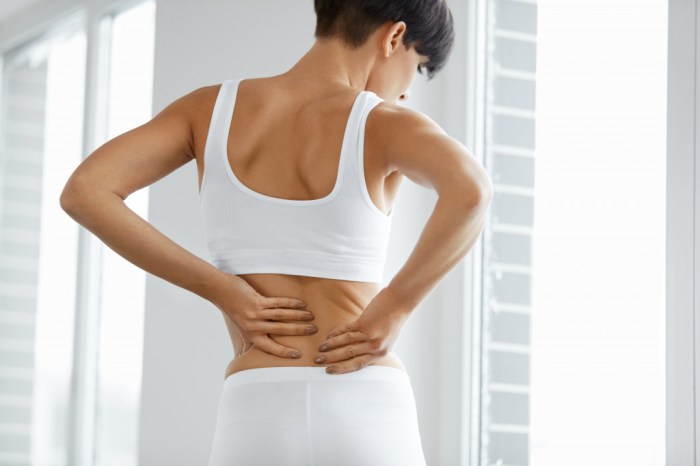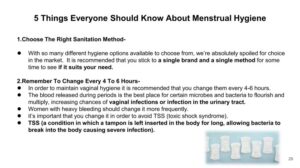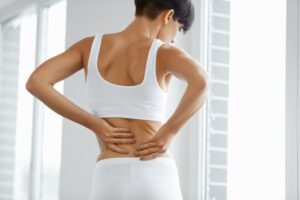
Osteoporosis in women is a significant health concern that affects millions worldwide, leading to increased fractures and complications. This condition, often characterized by weakened bones, is influenced by various factors including age, genetics, and lifestyle choices. Understanding the specifics of osteoporosis is crucial for early diagnosis and effective management, making awareness a key component in promoting bone health.
As we delve deeper into the intricacies of osteoporosis in women, we will explore the underlying causes, the alarming statistics that highlight its prevalence, and the essential steps that can be taken to prevent and manage this condition. From nutrition to exercise, every aspect plays a vital role in maintaining strong bones and overall health.
Osteoporosis Overview
Osteoporosis is a condition characterized by weak and brittle bones, which significantly increases the risk of fractures. This disease predominantly affects women, particularly postmenopausal individuals, due to hormonal changes that impact bone density. Understanding the causes, risk factors, and prevalence rates of osteoporosis in women is essential for promoting early detection and effective management strategies.Several factors contribute to the development of osteoporosis in women.
Hormonal changes, especially the decline in estrogen levels after menopause, play a pivotal role in bone loss. Other causes include aging, low calcium and vitamin D intake, sedentary lifestyle, smoking, and excessive alcohol consumption. Certain medical conditions, such as rheumatoid arthritis and hyperthyroidism, as well as the use of specific medications, like corticosteroids, can also elevate the risk of osteoporosis.
Statistics and Prevalence
Osteoporosis is a significant public health concern globally. The statistics surrounding its prevalence among women are staggering. It is estimated that approximately 1 in 3 women over the age of 50 will experience an osteoporotic fracture in their lifetime. In the United States alone, around 10 million people are diagnosed with osteoporosis, with women comprising approximately 80% of this population.
The importance of early diagnosis and screening cannot be overstated. Routine screening for osteoporosis using bone density tests, such as dual-energy X-ray absorptiometry (DXA), can facilitate early intervention. Identifying women at risk allows for the implementation of preventive measures, including lifestyle modifications and pharmacological treatments. Early detection is crucial since osteoporosis often progresses silently without symptoms until a fracture occurs.
“Early intervention in osteoporosis can significantly reduce the incidence of fractures and improve quality of life.”
Recognizing the risk factors and understanding the prevalence rates enables healthcare providers and women alike to prioritize osteoporosis prevention and management. Regular screenings, education about healthy lifestyle choices, and awareness of family history are pivotal in combating this silent disease.
Nutrition and Osteoporosis Prevention

Maintaining strong and healthy bones is crucial for women, particularly as they age and face an increased risk of osteoporosis. Nutrition plays a pivotal role in bone health, and understanding which nutrients to prioritize can empower women to take proactive steps in preventing this condition. A balanced diet rich in essential nutrients can bolster bone density and promote overall well-being.Key nutrients that are instrumental in supporting bone health include calcium, vitamin D, magnesium, and vitamin K.
Each of these nutrients contributes to the structural integrity of bones and aids in the prevention of osteoporosis. The following sections will delve into dietary strategies that not only highlight nutrient-rich foods but also Artikel foods to limit or avoid for optimal bone health.
Essential Nutrients for Bone Health
To effectively prevent osteoporosis, women should focus on incorporating various nutrients into their diets. Here is a detailed list of essential nutrients and their roles in maintaining bone health:
- Calcium: The primary mineral found in bones, crucial for maintaining bone density. Women should aim for 1,000 mg per day, increasing to 1,200 mg after age 50.
- Vitamin D: Enhances calcium absorption in the body. A daily intake of 600 IU is recommended for women under 70, and 800 IU for those 70 and older.
- Magnesium: Plays a role in converting vitamin D into its active form and is essential for bone structure. Aim for about 320 mg daily.
- Vitamin K: Supports bone mineralization and helps in calcium regulation. The recommended intake is 90 mcg for women.
- Protein: Vital for overall bone health as it contributes to bone strength; women should consume adequate protein from diverse sources.
- Boron: A trace mineral that supports bone health by assisting in calcium metabolism, with a suggested intake of about 3 mg daily.
Understanding these nutrients is the first step toward developing a dietary strategy that prioritizes bone health.
Dietary Strategies for Osteoporosis Prevention
Adopting a diet that emphasizes bone health can significantly reduce the risk of osteoporosis. Here are dietary strategies focusing on specific foods to include and foods to avoid:To promote strong bones, incorporate the following foods into your meals:
- Dairy Products: Milk, cheese, and yogurt are excellent sources of calcium and vitamin D.
- Leafy Greens: Kale, spinach, and collard greens provide calcium, magnesium, and vitamin K.
- Fatty Fish: Salmon, mackerel, and sardines are great sources of omega-3 fatty acids and vitamin D.
- Fortified Foods: Many cereals and plant-based milk alternatives are fortified with calcium and vitamin D.
- Nuts and Seeds: Almonds and sesame seeds contain calcium and magnesium.
While focusing on bone-enhancing foods, it is equally important to limit or avoid certain foods that can negatively impact bone health:
- Excessive Salt: A high-sodium diet can lead to calcium loss from bones.
- Caffeine: High caffeine intake may interfere with calcium absorption; moderation is key.
- Soft Drinks: Colas often contain phosphoric acid, which may weaken bones.
- Alcohol: Excessive alcohol intake can interfere with calcium balance and bone formation.
By adopting these dietary strategies, women can create a strong foundation for their bone health.
Role of Supplements in Bone Health
For women at risk of osteoporosis, dietary supplements can be a beneficial addition to their nutrition plan, particularly when it’s challenging to obtain adequate nutrients from food alone. Supplements can help fill any nutritional gaps and ensure optimal intake of essential nutrients for bone health.Calcium and vitamin D supplements are among the most commonly recommended for women. If dietary sources are insufficient, a calcium supplement of 500-600 mg may be necessary, especially for those who are lactose intolerant or do not consume dairy.
Vitamin D supplements can also be advantageous, particularly in regions with limited sunlight exposure.Additionally, multivitamins that include magnesium, vitamin K, and boron can further support bone health. It is essential for women to consult with healthcare providers before starting any supplement regimen to determine the appropriate dosages and interactions with other medications.Incorporating these nutritional strategies and understanding the role of supplements can empower women to take significant steps toward preventing osteoporosis and maintaining robust bone health throughout their lives.
Fitness and Osteoporosis Management

Engaging in a structured exercise program is essential for managing osteoporosis in women. Tailored fitness routines not only enhance bone density but also contribute positively to overall health. Regular physical activity plays a key role in mitigating the effects of osteoporosis, fostering strong bones, and improving quality of life.
Exercise Program for Bone Strength
A well-rounded exercise program aimed at improving bone strength should incorporate a variety of activities focused on resistance and weight-bearing exercises. These activities stimulate bone formation and help maintain bone density. Here are some foundational components to consider when designing an effective exercise program:
- Weight-Bearing Exercises: Activities such as walking, jogging, dancing, and stair climbing force your body to work against gravity, promoting bone strengthening.
- Resistance Training: Using weights, resistance bands, or bodyweight exercises (like push-ups and squats) can significantly enhance muscle mass and bone density.
- Balance and Flexibility Exercises: Incorporating yoga or tai chi can improve balance and coordination, reducing the risk of falls and fractures.
- Frequency: Aim for at least 30 minutes of moderate-intensity exercise most days of the week, combining different types of workouts for optimal benefits.
The importance of maintaining consistency in this exercise regimen cannot be overstated. It’s crucial for women with osteoporosis to start slowly and progress gradually, ensuring safety and effectiveness while minimizing injury risks.
Benefits of Weight-Bearing and Resistance Exercises
Weight-bearing and resistance exercises offer numerous advantages for women managing osteoporosis. The primary benefit lies in their ability to stimulate bone growth, making bones denser and less susceptible to fractures. This process occurs through mechanical loading; when bones are subjected to stress, they adapt and strengthen.
- Bone Density Improvement: Regular weight-bearing activities can lead to increased bone mass, particularly in the hips, spine, and wrists, which are common fracture sites for those with osteoporosis.
- Muscle Strengthening: Resistance training enhances muscle strength and endurance, which is vital for maintaining mobility and independence.
- Injury Prevention: Stronger muscles support and stabilize bones, significantly reducing the risk of falls and related injuries.
- Enhanced Posture: Improved strength and flexibility contribute to better posture, reducing the likelihood of vertebral fractures related to poor alignment.
Impact of Physical Activity on Mental Health
Physical activity carries profound benefits for mental health, particularly for women with osteoporosis. Engaging in regular exercise not only supports physical well-being but also contributes to psychological and emotional health.
- Reduction of Anxiety and Depression: Exercise is known to release endorphins, the body’s natural mood lifters, helping to alleviate feelings of anxiety and depression.
- Improved Self-Esteem: Achieving fitness goals, no matter how small, can bolster confidence and self-image, which is especially important for individuals managing a chronic condition.
- Social Interaction: Participating in group classes or exercise programs can foster social connections, reducing feelings of isolation and loneliness.
- Stress Relief: Physical activity serves as a healthy outlet for stress, promoting relaxation and better sleep quality.
Incorporating fitness into daily routines not only aids in bone health but also enhances overall well-being, making it a vital component of osteoporosis management for women.
Concluding Remarks
In summary, osteoporosis in women is not just a consequence of aging but a complex interplay of various factors that can be managed with the right approach. By prioritizing nutrition, engaging in regular exercise, and obtaining early screenings, women can significantly reduce their risk and enhance their quality of life. It is essential to spread awareness about osteoporosis and empower women to take proactive steps towards maintaining their bone health.
Clarifying Questions
What are the primary risk factors for osteoporosis in women?
Key risk factors include age, family history, low body weight, hormonal changes (especially menopause), and certain medical conditions or medications.
How can I prevent osteoporosis?
Preventing osteoporosis involves maintaining a balanced diet rich in calcium and vitamin D, engaging in weight-bearing exercises, and avoiding smoking and excessive alcohol consumption.
Are there specific exercises that are best for bone health?
Weight-bearing exercises such as walking, jogging, and resistance training are particularly effective for strengthening bones.
At what age should women begin osteoporosis screening?
Women should consider screening for osteoporosis starting at age 65 or earlier if they have risk factors.
Can osteoporosis be reversed?
While osteoporosis cannot be completely reversed, its progression can be slowed, and bone density can be improved through lifestyle changes and medication.





